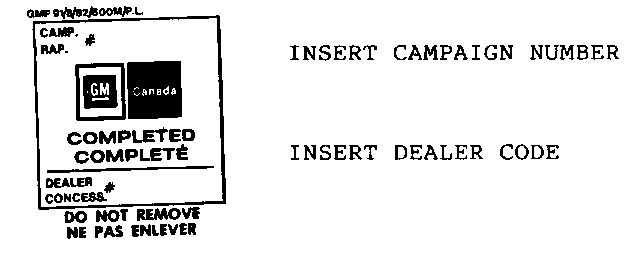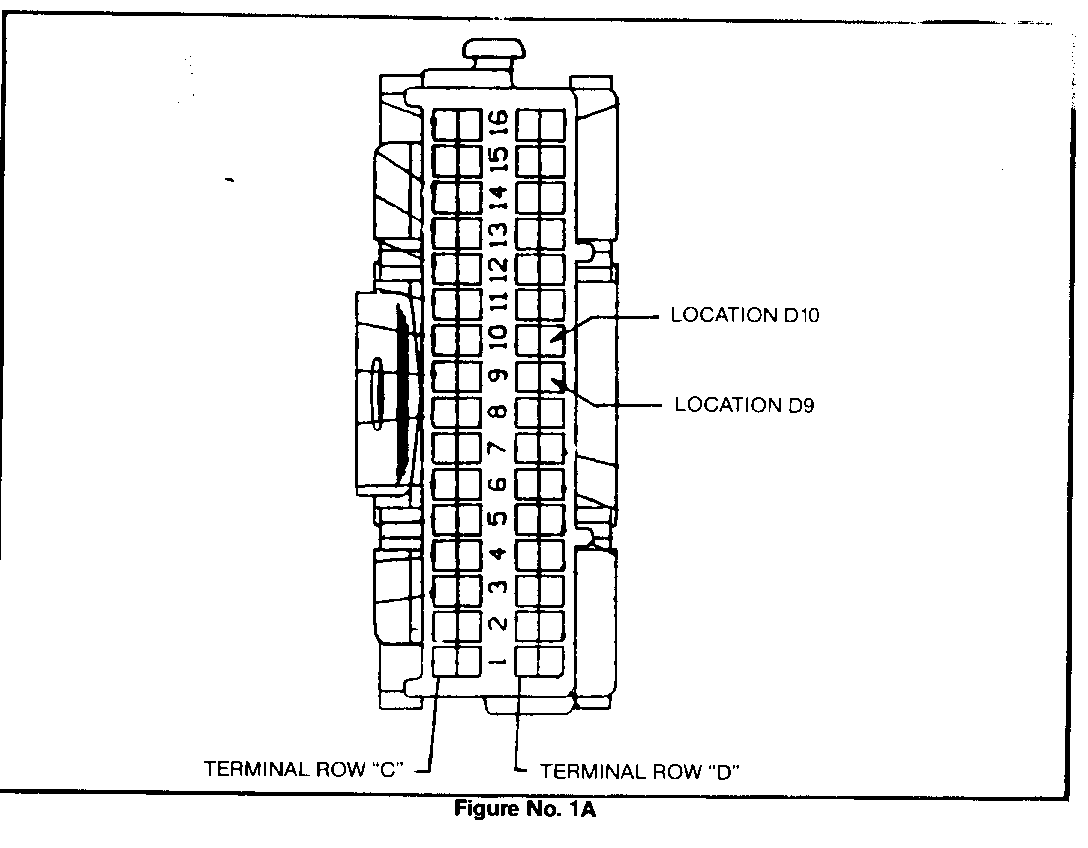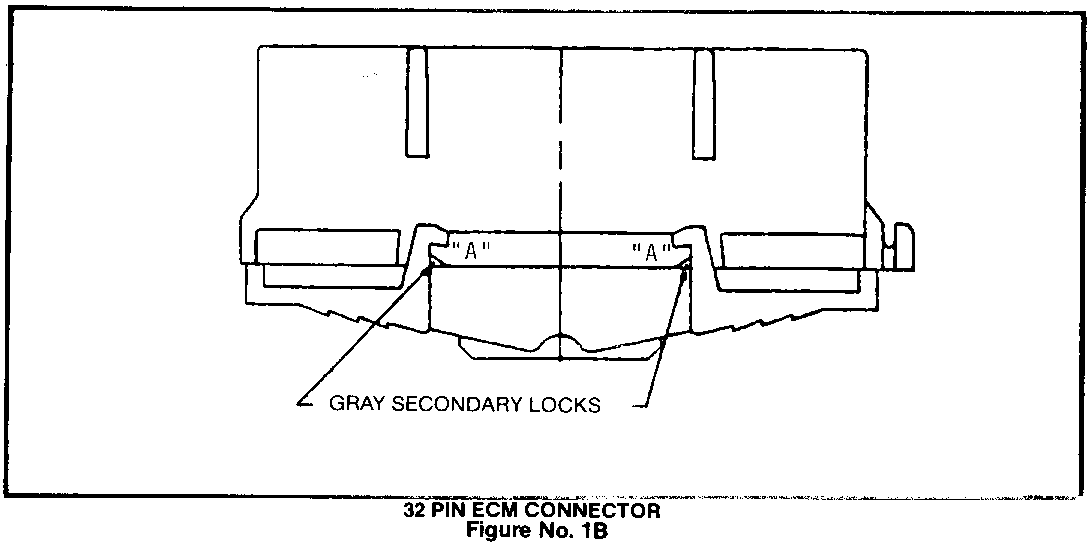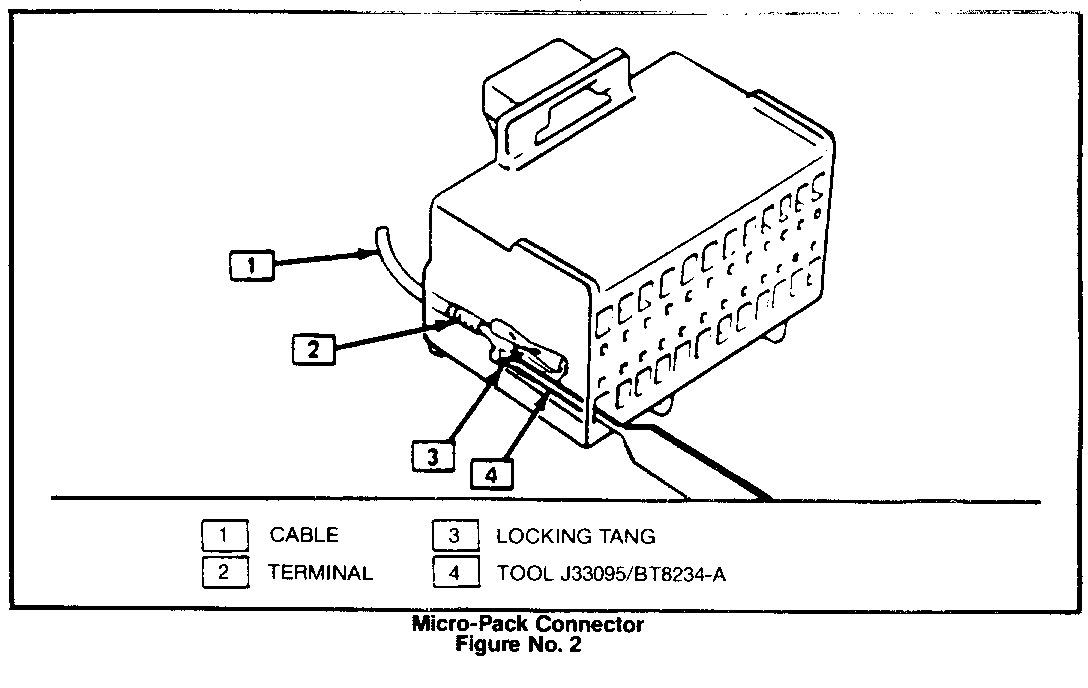CAMPAIGN: ENGINE HARNESS ECM CONNECTOR CRACKED TERMINAL

ENGINE HARNESS ECM CONNECTOR CRACKED TERMINAL
MODELS 1987 S/T Equipped with 2.5L Engines (RPO LN8)
General Motors of Canada has determined that some 1987 Chev and GMC S/T Model Trucks equipped with 2.5L (RPO LN8) engines may have been built with an engine electrical harness which has a cracked wire terminal on a jumper wire in the ECM connector. As a part of the fuel injector signal circuit, if the terminal breaks and causes an open circuit, this will allow the engine to crank but not start.
To prevent this condition from occurring it will be necessary to replace the jumper wire, which has terminals attached.
VEHICLES INVOLVED:
Involved are certain 1987 Chev or GMC S/T Trucks equipped with 2.5L engines (LN8) built within the following VIN breakpoints:
PLANT FROM TO ----- ----- --
GMC
Pontiac West H0505825 H0507243 Moraine H2507772 H2511308 Shevreport H8511924 H8513235
CHEVROLET
Pontiac West H0120345 H0126206 Moraine H2139134 H2151404 Shevreport H8141449 H8146252
All affected vehicles have been identified by the VIN listing provided to involved Dealers with this bulletin. Any Dealer not receiving a listing was not shipped any of the affected vehicles.
DEALER CAMPAIGN RESPONSIBILITY:
Dealers are to service all vehicles subject to this campaign at no charge to owners, regardless of mileage, age of vehicle, or ownership, from this time forward.
Whenever a vehicle subject to this campaign is taken into your new or used vehicle inventory, or it is in your Dealership for service in the future, you should take the steps necessary to be sure the campaign correction has been made before reselling or releasing the vehicle.
Owners of vehicles recently sold from your new vehicle inventory are to be contacted by the Dealer, and arrangements made to make the required modification according to instructions contained in this bulletin.
CAMPAIGN PROCEDURE:
Refer to Section 4 of the Service Policies and Procedures Manual for the detailed procedure on handling Product Campaigns. Dealers are requested to complete the campaign on all transfers as soon as possible.
OWNER NOTIFICATION:
All owners of record at the time of campaign release are shown on the attached computer listing and have been notified by first class mail from General Motors. The listings provided are for campaign activity only and should not be used for any other purpose.
PARTS INFORMATION:
A jumper wire, P/N 12077137 complete with terminals, will be shipped and charged to Dealers.
PARTS AND LABOUR CLAIM INFORMATION:
Credit for the campaign work performed will be paid upon receipt of a properly completed campaign claim card, RAPID terminal or DCS transmission in accordance with the following:
Repair Code Description Time Allowance ----------- ------------ --------------
2A Replace 151 Jumper Wire .6 according to service procedure.
Time allowance includes 0.1 hour for Dealer administrative detail associated with this campaign.
Parts credit will be based on Dealer net plus 30% to cover parts handling.
SERVICE PROCEDURE:
In order to remove micro-pack terminals from the connector, a terminal removal tool will be required to perform this repair. Proper tool is Kent- Moore J-33095 or Burroughs BT-8234-A.
1. Disconnect negative battery cable.
2. Locate the ECM under the instrument panel on the passenger side of the vehicle. Disconnect both connectors from the ECM.
3. Locate and disconnect the instrument panel wiring interconnect taped to ECM harness.
a. Locate the 151 jumper wire terminals (.80 gauge black) that are side by side in cavities D-9 and D-10 in the centre of the 32-way ECM connector (with gray secondary locks), Figure No. 1A.
4. Remove the gray comb secondary lock (using a pick) retaining the 151 wire terminal by releasing the lock tangs on the outside of the ECM connector at both points A and pulling the secondary lock out of the connector (Figure No. 1B).
Removal of the 151 wire:
a. Grasp the wire seated in cavity D-9 and push the terminal to its forward most position.
b. Insert the micro-pack removal tool into the outside hole of the D-9 cavity (see Figure No. 2). Removal tool will depress the lock tang only while the terminal is in the forward most position in the cavity.
c. While holding the tool securely in place, gently pull on the wire to remove the terminal.
CAUTION:
To prevent damage to the connector:
A. Only use the micro-pack removal tool, J-33095 or BT-8234-A.
B. Do not apply excessive pressure to the removal tool.
C. Do not rock or angle the removal tool.
d. Remove the second end of the 151 wire by repeating steps 4A through 4C in cavity D-10.
Remove the 151 wire from the harness by firmly grasping both ends with pliers and gently pulling it out of the harness. Install the replacement wire as follows:
Orient the first terminal on the replacement wire so that the box side of the terminal is towards the centre of the connector. Insert the terminal into cavity number D-9. A faint click will be heard as the terminal locks in place. Give the wire a light tug to ensure it is seated.
Install the remaining end of the replacement wire into cavity D-10 following the above procedure.
Reinstall the secondary lock into the connector by inserting the teeth of the lock into the connector and pushing firmly until the lock legs snap into place.
Separate the two ECM connector branches. Fold the loop of the replacement wire towards the 32-way ECM connector and secure with plastic electrical tape.
Reconnect the two ECM connectors to the ECM. Reconnect the instrument panel interconnect.
5. Reconnect battery cable.
INSTALLATION OF CAMPAIGN IDENTIFICATION LABEL
Clean surface of radiator upper mounting panel and apply a campaign Identification Label. Make sure the correct campaign number is inserted on the label. This will indicate that the campaign has been completed.




General Motors bulletins are intended for use by professional technicians, not a "do-it-yourselfer". They are written to inform those technicians of conditions that may occur on some vehicles, or to provide information that could assist in the proper service of a vehicle. Properly trained technicians have the equipment, tools, safety instructions and know-how to do a job properly and safely. If a condition is described, do not assume that the bulletin applies to your vehicle, or that your vehicle will have that condition. See a General Motors dealer servicing your brand of General Motors vehicle for information on whether your vehicle may benefit from the information.
